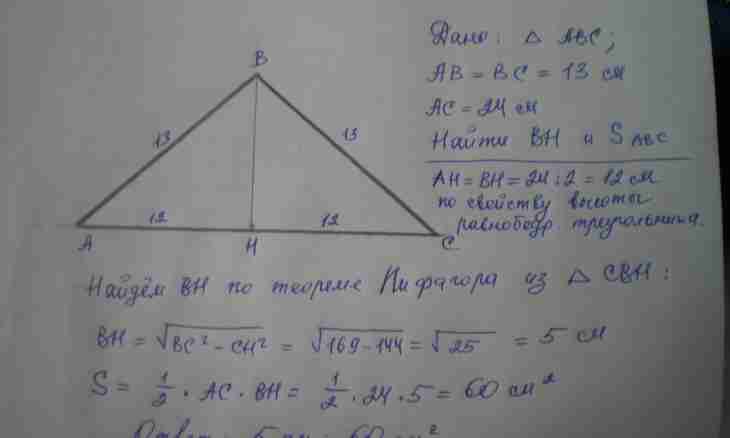The trapeze is the two-dimensional geometrical figure having four tops and only two parallel parties. If length of two of its nonparallel parties is identical, then the trapeze is called isosceles or ravnoboky. The border of such polygon made of its parties can be designated by the Greek word "perimeter". Depending on a set of basic data it is necessary to calculate perimeter length on different formulas.
Instruction
1. If lengths of both bases are known (an and b) and length of side (c), perimeter (P) of this geometrical figure pays off very simply. As the trapeze of a ravnobedrenn, its sides have identical length, and it means that lengths of all parties are known to you - just put them: P = a+b+2*c.
2. If lengths of both bases of a trapeze are unknown, but length of the average line (l) and side (c) is given, then and these data are enough for calculation of perimeter (P). The average line is parallel to both bases and on length is equal to their half-sum. Double this value and add to it the doubled side length too - it is and will be perimeter of an isosceles trapeze: P = 2*l+2*c.
3. If from statements of the problem lengths of both bases are known (an and b) and height (h) of an isosceles trapeze, by means of these data it is possible to restore length of missing side. It is possible to make it having considered a rectangular triangle in which the unknown party, and legs - height and a short piece which it cuts from the long basis of a trapeze will be a hypotenuse. Length of this piece can be calculated, having divided in half the difference between lengths of the bigger and smaller bases: (a-b)/2. Hypotenuse length (trapeze side), according to Pythagorean theorem, will be equal to a square root from the sum of the squared lengths of both known legs. Replace in a formula from the first step side length with the received expression, and you receive such formula of perimeter: P = a+b+2 * √ (h²+(a-b)²/4).
4. If in statements of the problem lengths smaller the grounds (b) and side (c) and also height of an isosceles trapeze (h) are given, then considering the same auxiliary triangle, as in the previous step, you should calculate leg length. Again use Pythagorean theorem - required size will be equal to a root from the difference between squared by length of side (hypotenuse) and height (leg): √ (with²-h²). On this piece of the unknown basis of a trapeze it is possible to restore its length - double this expression and add length of the short basis to result: b+2 * √ (with²-h²). Substitute this expression in a formula from the first step and find perimeter of an isosceles trapeze: P = b+2 * √ (with²-h²) +b+2*c = 2 * (√ (with²-h²) +b+c).
